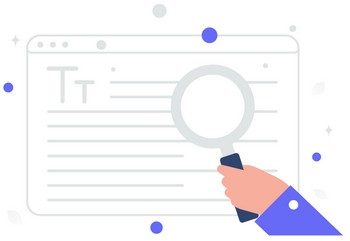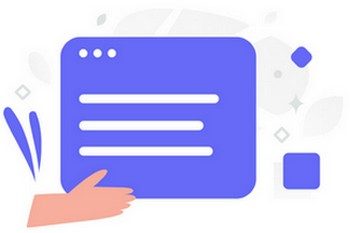In this era, all businesses need a strong online presence. Whether you run an online business or a personal blog, SEO can drive organic traffic.
In this article, we’ll cover on-page optimization fundamentals, techniques involved in on-page optimization, and how to apply them to your website to improve SEO.
Table of Contents
What Is On-Page Optimization?
On-page optimization improves website visibility and search engine rankings. It includes website content, HTML source code, and structure.
On-page SEO makes your website more search engine-friendly. Optimizing website on-page elements improves relevance, visibility, and user experience.
On-page optimization boosts search engine rankings, traffic, and sales. On-page optimization involves continuously monitoring and modifying website features.
This keeps your website relevant, up-to-date, and search engine-friendly.
How Do Meta Tags Affect On-Page Optimization?
Meta tags are HTML codes that inform search engines and website visitors about a page. They are hidden in the HTML head section.
Search engines use meta tags to analyze and display your website in SERPs.
Techniques For On-Page Optimization
Implementing on-page optimization techniques can boost SEO and user experience. Let’s discuss some of these techniques:
Keyword Research And Usage

The process of identifying and analyzing the terms and phrases that people use to search for products and services online is known as keyword research.
Before optimizing your website, conduct extensive keyword research. This includes identifying your target audience’s search terms and phrases for your website’s products, services, and information.
After identifying keywords, strategically include them in your website’s content.
For example, online gaming accessories businesses can use relevant keywords such as “gaming laptop,” “high-performance gaming,” and “gaming hardware.” Etc.
By using appropriate keywords, you can improve your website’s relevance, visibility, and overall performance in search engine rankings.
SEMrush, Ahrefs, and Google Keyword Planner are some tools that can help you find the ideal keywords for your website that can boost your website’s organic traffic.
Avoid keyword stuffing and strike a balance to avoid search engine penalties. Use keywords naturally in headers, titles, meta descriptions, and picture alt tags.
Improve User Experience
User experience (UX) affects website engagement and conversion rates. Optimizing design, navigation, and usability improves UX. Keep your website simple, fast, and mobile-friendly.
Improve your website’s user experience with clear language, relevant images, and easy-to-use forms.
Server Response Time

As search engines use website load times as a ranking factor, reducing server response times is an essential component of on-page optimization.
Use Internal Linking
Internal linking creates a logical and hierarchical website structure by linking pages.
This improves your search engine ranking by making it easy for search engines to crawl and index your website’s pages. Internal linking helps users explore your website and find relevant content.
Graphics
All images are key content components that can be optimized. They can serve to boost the content’s relevancy, and well-optimized photos can rank on their own in Google’s image search.
At the same time, they can enhance the appearance of a website to users.
Attractive image galleries can help enhance the amount of time users spend on a website. Graphics file names are one aspect of picture optimization.
High-Quality And Engaging Content

Content dominates on-page optimization. Search engines prioritize websites with useful and relevant information.
Thus, you must produce high-quality, engaging, and informative content that meets your audience’s needs. Make sure your writing is clear, well-structured, and error-free.
To improve readability, utilize headings and subheadings, bullet points, and numbered lists. Images, movies, and infographics can also improve user engagement.
Optimized Page Titles And Meta Descriptions
Page titles and meta descriptions are essential elements of on-page optimization. The meta description summarizes the page’s content, while the page title appears in search results.
Optimizing these aspects helps search engines grasp your website’s relevancy and context.
When creating page titles, ensure that they accurately describe the content of the page and incorporate relevant keywords. Keep them concise, typically between 50-60 characters, to avoid truncation in search engine results.
Meta descriptions should be informative, compelling, and within the recommended limit of 150-160 characters.
Including keywords naturally within these elements can improve your website’s visibility in search engine results and attract more clicks from users.
User-Friendly URL Structure

A well-structured URL not only helps search engines understand the content of a web page but also improves the user experience.
When optimizing your website’s URLs, aim for a simple and descriptive structure that includes relevant keywords.
Long, complicated URLs containing digits or special characters might confuse search engines and users.
For instance, “yourwebsite.com/on-page-optimization” is a more user-friendly URL than “14564abc/article?id=5678“. The former is more readable and informative.
Internal linking refers to linking one page of your website to another. It helps search engines discover and index your web pages more efficiently while also improving the user experience by providing additional relevant information.
Conclusion
In conclusion, on-page SEO makes your website search engine-friendly. Optimizing content, meta tags, URLs, and user experience can boost your website’s search engine ranks.
On-page optimization boosts organic traffic and user engagement and lets you achieve online success.
Editorial Staff at WP Daily Coupons is a team of WordPress experts led by Peter Nilsson.

